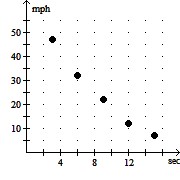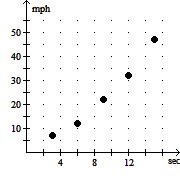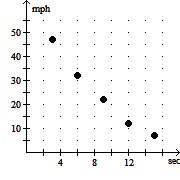Write the decimal as a fraction. Do not write in lowest terms.8.54
A. 
B. 
C. 
D. 
Answer: A
You might also like to view...
Find all the second order partial derivatives of the given function.f(x, y) = cos (xy2)
A.  = - y2 sin xy2;
= - y2 sin xy2;  = 2y
= 2y ;
;  =
=  = 2
= 2
B.  = - y2 sin xy2;
= - y2 sin xy2;  = 2[ sin (xy2)- 2y2 cos (xy2)] ;
= 2[ sin (xy2)- 2y2 cos (xy2)] ;  =
=  = 2y [sin (xy2)-y2 cos (xy2)]
= 2y [sin (xy2)-y2 cos (xy2)]
C.  = -y4 cos xy2;
= -y4 cos xy2;  = - 2x[2xy2 cos (xy2) + sin(xy2)];
= - 2x[2xy2 cos (xy2) + sin(xy2)];  =
=  =
=
- 2y[xy2 cos (xy2) + sin(xy2)];
D.  = y2 sin xy2;
= y2 sin xy2;  = 2[2y2 cos (xy2) - sin (xy2)] ;
= 2[2y2 cos (xy2) - sin (xy2)] ;  =
=  = 2y[y2 cos (xy2) - sin (xy2)]
= 2y[y2 cos (xy2) - sin (xy2)]
Find the sum.1 + (-9)
A. 10 B. -8 C. 8 D. -10
Divide.90 ÷ 3
A. 30 B. 32 C. 28 D. 33
Solve the problem.Suppose that the speed of a car, measured in miles per hour (mph), is monitored for some short period of time after the driver applies the brakes. The following table relates the speed of the car to the amount of time, measured in seconds (sec), elapsed from the moment that the brakes are applied. Represent the data in the table graphically with elapsed time on the horizontal axis and speed on the vertical axis. What general trend do the data reflect?
Represent the data in the table graphically with elapsed time on the horizontal axis and speed on the vertical axis. What general trend do the data reflect?
A. There is no apparent trend in the data.
B. With increasing elapsed time,
the speed increases.
C. With increasing elapsed time,
the speed increases.
D. With increasing elapsed time,
the speed decreases.